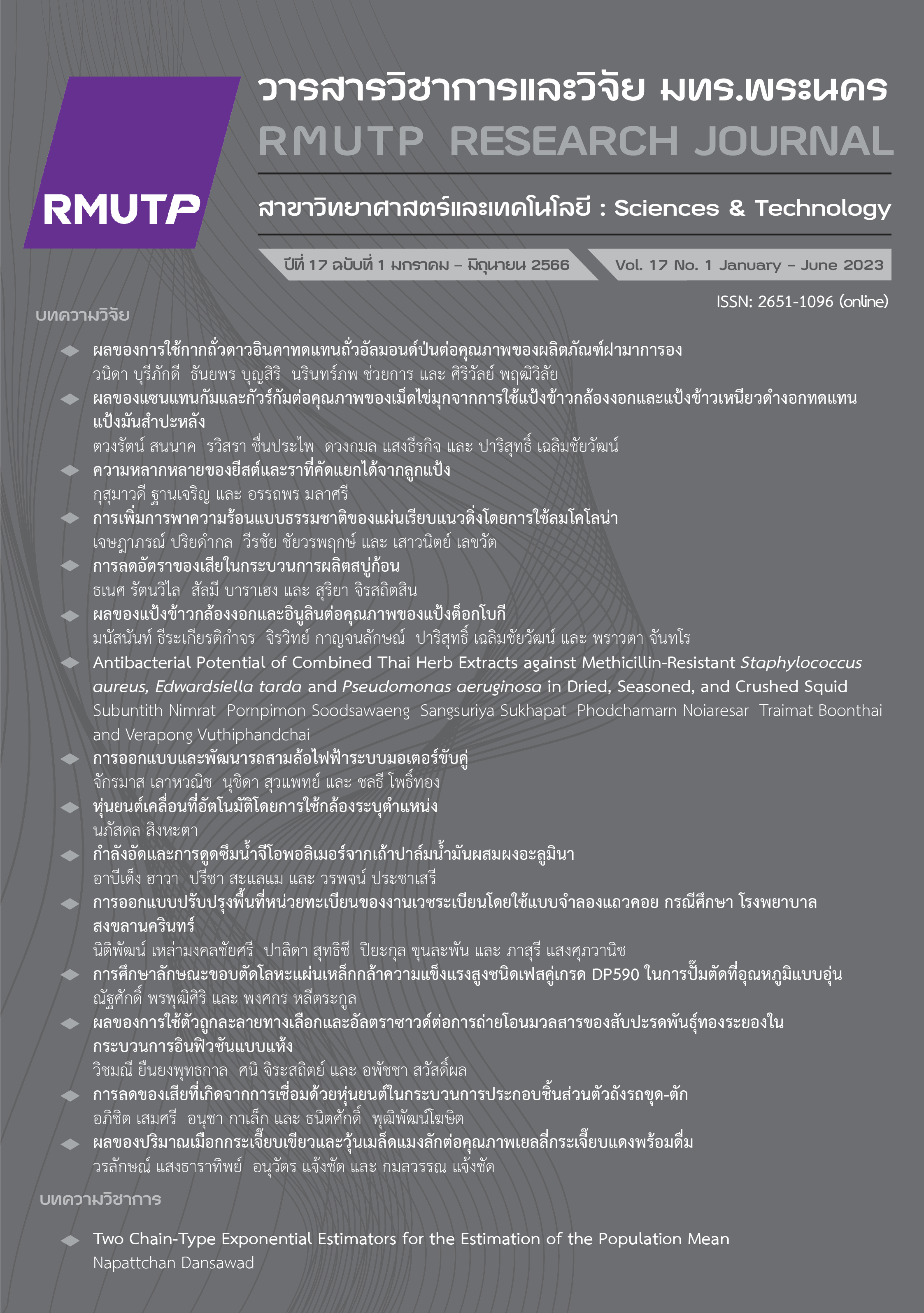Improvement of Medical Record Registration Unit Design of Songklanagarind Hospital Using Queueing Models
Main Article Content
Abstract
Nowadays, hospitals have become conscious of the quality of their services in providing an efficient assistance to patients. The purpose of this research is to design an improve the Medical Record Registration Unit of Songklanagarind hospital using queueing models. In this research, the simulation approach via ProModel Simulation software is applied to design and analyze the service model of the medical record registration unit by finding the number of service channels that are suitable for the current and future service demand and to reduce the waiting time of service users. During the period with the most patients receiving services from 7:00 a.m. to 10:00 a.m., 53%, the work can be divided into two groups, the first group, accounting for 80.27 percent of the total number of patients. The average service time was 4.00 minutes per job and the second group accounted for 19.73 percent of the total number of patients. There is an average service time of 1.30 minutes per job. The results showed that a single queue which is opened to all service channels and divided by work group can reduce the average time spent in waiting by 90.49%, from 11.57 minutes to only 1.10 minutes. The average time spent by users is reduced by 76.26%, from 22.33 minutes to 5.30 minutes.
Article Details

This work is licensed under a Creative Commons Attribution-NonCommercial-NoDerivatives 4.0 International License.
ลิขสิทธ์ ของมหาวิทยาลัยเทคโนโลยีราชมงคลพระนครReferences
Songklanagarind Hospital, (30 January 2021). “Hospital History,” [Online]. Available: https://hospital.psu.ac.th/
Medical Record Section, (30 January 2021). “Medical Record Data,” [Online]. Available: http://medinfo2.psu.ac.th/medrec/63_data/opdall.htm?fbclid=IwAR2bmcnGF5eTORVEOEFcHTrvNF2OmcBB2f6_5EoOTL1zypp8u5tfHRJOJoI
P. Chaichomphu, S. Pongsena and P. Seenoi, “Application of M/M/s Queuing Model to the hospital,” M.S. thesis , Statistics, Khon Kaen University, Thailand, 2017.
P. Ruengpeng, “Simulation of queuing systems for outpatient service: acase study of the internal medicineat Phatthalung hospital,” Veridian E-Journal, vol. 6, no. 3, pp. 834-845, 2013.
P. Vaenthaisong, “Reducing the time of service for psychiatric hospitals using simulation technique,” M.S. thesis, Information Technology, Suranaree University of Technology, Thailand, 2012.
T. Rattnakool, K. Sukkrajang, P. Tucktern and P. Jantavee, “Queuing Analysis on The Payment Point for Electricity of Public Sector A Case Study: Chana District.,” in The 8th Hatyai National and International Conference, Songkhla, 2017.
T. Chanapia and P. Putthasri, “The Queuing System by using the Queuing theory Case Study: Bank for Agriculture and Agricultural Co-operatives Khon Kaen Branch,” M.S. thesis, Statistics, Khon Kaen University, Thailand, 2014.
P. Sittipong and N. Samattapapong, “An Improvement of Service Queue by Using Simulation in the Medical Records Department of the Medical Center at Suranaree University of Technology,” Thai Industrial Engineering Network Journal, vol. 4, no. 1, pp. 10-16, 2018.
W. Chuncharoenkit, P. Sa-ngiamsunthorn, B. Chansawang, J. Thaithanan and T. Supapakorn, “Simulation of Queuing System for Outpatient Service: A Case Study of the Diabetic Clinic in Outpatient Department at Somdet Phra Phutthaloetla Hospital,” Thai Science and Technology Journal, vol. 26, no. 1, pp. 71-79, 2018.
D. W. Kelton, R. P. Sadowski and D. T. Sturrock, Simulation with Arena- 3rd ed.International Edition, McGraw- Hill. The McGraw-Hill Company. Inc, 2003.

